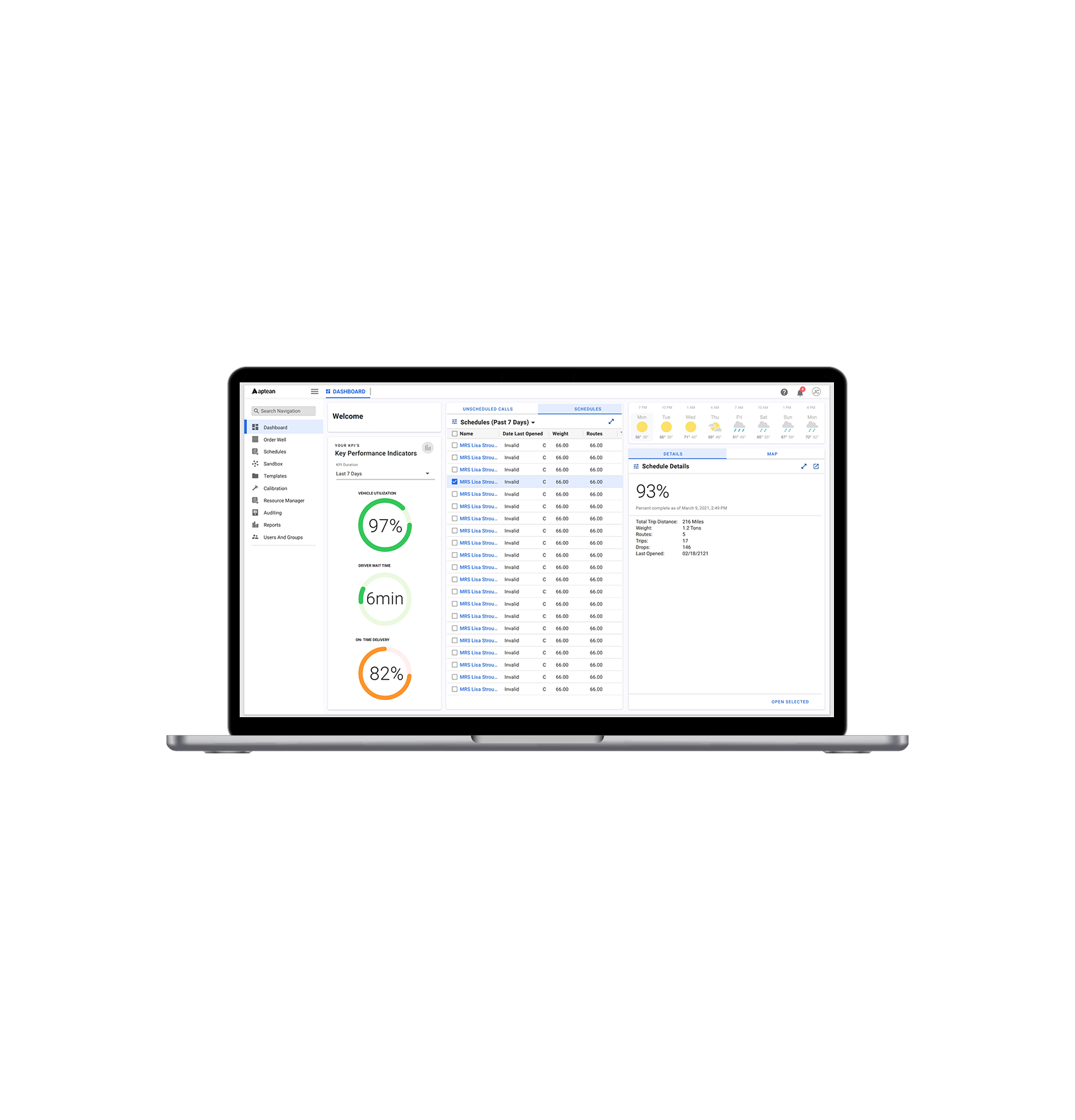Top 5 Tips to Achieving Route Planning Success
Top 5 Tips to Achieving Route Planning Success
Top 5 Tips to Achieving Route Planning Success
10 Sep 2021
 Jim Endres | Regional Account Director
Jim Endres | Regional Account Director
In today’s competitive market, getting orders out to as many customers as possible in the quickest, most affordable way is the name of the game. And intelligent route planning is critical to this equation, as transportation is one of the largest cost centers in many businesses.
Investing in routing software to get goods out to customers efficiently is a great first step. But technology alone won’t make your business stand out from the competition. You need to put resources into how your chosen software is rolled-out and run to truly help your company thrive.
Ready to drive route planning success? Here are five top tips for making your routing software work harder, to deliver cost savings without compromising on customer performance.
1. Make the Most of Professional Services
When you invest in routing software, you’re not just purchasing new technology; you’re buying into the expertise of the vendor that created it. So make sure you work closely with them to leverage that knowledge and support.
Putting adequate resources into implementation and user training is pivotal, as up-front investment will ensure your business runs better from day one. Don’t be afraid to ask your technology partner questions, as their professional insight will help you to set up the software in the most appropriate way for your company needs.
Also, make sure you choose a vendor that offers ongoing customer support. The best routing software providers on the market want to build long-term relationships, so their solution adds value as your business matures and evolves.
2. Invest in Advanced Training
While an expert partner will get you off on the right foot, you can’t rely on your software provider alone to drive route planning success. It needs to be a combination of partner intelligence and in-house commitment.
Every transportation business needs at least one technology super-user, who adheres to best practice and confidently uses your routing software to optimize daily schedules. Without someone running it ‘by the book’, it’s easy for personal habits and shortcuts to creep in, which, over time, erodes the benefits of having route planning technology in place.
Your company super-user can keep in regular contact with vendor support teams, to learn new skills and overcome challenges. Then, they can pass this knowledge onto other users across your business, so that every person is operating your scheduling software correctly and consistently.
3. Conduct Regular Driver Debriefs and Partner With Your Drivers to Meet Company KPIs
All too often, decisions are made by planning and dispatch teams without really involving drivers. It’s what we call the disconnected route plan. Creating a continuous feedback loop that brings in driver knowledge will identify opportunities to calibrate your system and continuously improve routes.
But it’s important that drivers aren’t just consulted on events; their performance needs to be incorporated into department targets, to make them accountable for success.
As a major business cost center, setting and achieving transportation KPIs can have a massive impact on your bottom line—and it’s everybody’s job to work towards those goals. Drivers are brand ambassadors, just like your customer service teams and salespeople.
The best way to hold drivers accountable is to use the data being generated within your route optimization system to look at planned versus actual activity, debriefing them after every shift.
For example, your routing software will tell you if drivers missed a time window, carried out deliveries out of sequence, went over planned mileage and/or time, or exceeded the speed limit. Much of this information is being generated by your ELD system anyway, it’s just needs to be integrated with your routing system so it can be fully utilized.
With route planning software, you can extract this data and use it to have an open, honest discussion with drivers. Making sure they are working in a safe, compliant manner, while following company best practices. You can also use data to highlight the top performers in your organization. This will give team members something to aspire to—especially if it’s linked to a financial incentive.
4. Incorporate Customer Feedback
Just as drivers are a powerful source of route knowledge, their day-to-day experiences dealing with customers also provides valuable feedback for your delivery schedules.
One of the major benefits to investing in route optimization software over a generic planning tool like Google Maps is calculating routes based on more information than just geography. Your sales team can promise certain delivery times to secure an important new contract, for example.
However, even with updates being made by planning and sales, the driver’s experience on their daily route can be very different. For instance, the system may dictate that Customer A must be first on the route, as this was a stipulation when they first came on board. But more often than not, when your driver turns up, there’s already a backlog of trucks waiting to unload—so they find it works best to arrive after 11am, and the customer is fine with this arrangement.
Creating a feedback loop allows drivers to relay this information formally, so that it can be captured through your software rather than in someone’s head. Not only does this help with route planning; if your usual driver is off sick, someone else can easily step in and follow the schedule to the letter without any issues.
5. Audit Your Routing and Scheduling Software Requirements Annually
Throughout these top tips, we’ve talked about the value of having routing and scheduling software in place, using it in a best practice manner to extract its full benefits. However, it still pays to take a step back each year and check that you’re getting the best possible results from your investment.
Conducting an annual audit of your systems and processes with your technology provider will enable you to make strategic changes that drive business performance. Transportation requirements are always moving and changing, so even with a clear implementation plan like we mentioned in step one, your setup is likely to evolve.
In year one especially, the way that you think you’ll use route optimization technology differs from the reality. Leveraging the services of your professional partner to analyze and update your software configuration will ensure you’re continuing to create cost-effective route plans, year after year.
Aptean Routing & Scheduling software is an advanced route planning solution designed to increase efficiencies and reduce cost. From implementation and training to ongoing support, we’ll help your organization to drive long-term route planning success.
Book a personalized Aptean Advanced Routing Software demo to discover more.
Tired of late deliveries and rising costs?
Our transportation management system is built to handle the realities of businesses like yours—so you can move faster, plan smarter and stop firefighting.



